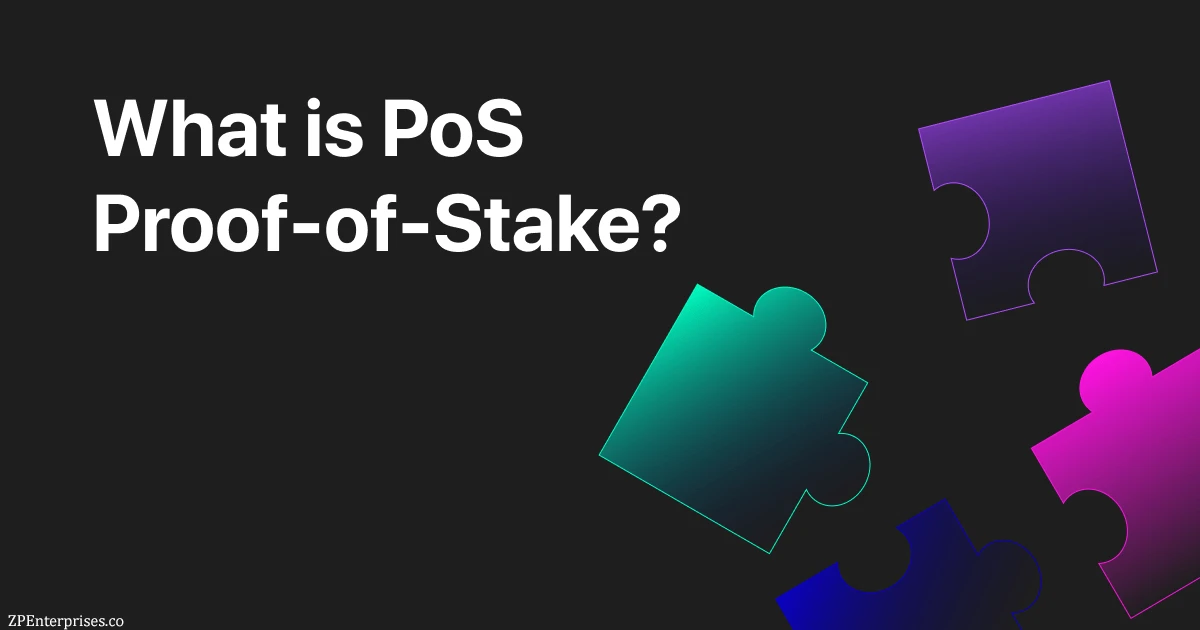Proof-of-stake maintains integrity in a blockchain, ensuring cryptocurrency users can’t mint coins they didn’t earn.
Proof-of-stake is a method of maintaining the integrity of a cryptocurrency, preventing users from printing extra coins they didn’t earn. For example, a different method, called proof-of-work, is currently used by Bitcoin and Dogecoin.
Proof-of-work and proof-of-stake are called “consensus mechanisms,” the method by which a blockchain maintains its integrity. Consensus is what addresses the “double spending” problem of digital money. If there were any way the user of a cryptocurrency could spend their coins more than once, it would undermine the entire system. The currency would be worthless.
This is a tricky problem, especially with online currencies with no central authority, such as a bank or a government, to track how much money each person has, how they’re spending it, and whom they’re paying.
The Bitcoin network was the first to solve this problem with proof of work. Proof-of-stake has emerged as a possible alternative that some researchers think is more energy-efficient and secure.
Why is proof of anything needed?
It’s not so hard to prevent double-spending centrally when one entity manages a ledger of all the transactions. When Alice sends Bob $1, the manager of the central ledger takes $1 from Alice and gives $1 to Bob. PayPal does precisely that.
But cryptocurrencies are different. The goal is not to have one leader or entity in control of the system, which complicates this record-keeping.
Instead of just one leader, thousands of users run the Bitcoin software worldwide. These “nodes” ensure the rules of the network are followed. This sprawling infrastructure needs to be tied together so all the software agrees. Otherwise, these nodes will be disconnected islands.
Getting these users worldwide to agree with each other is difficult, so decentralized money was out of reach for researchers for a long time. Until Bitcoin came along. Proof-of-work is the innovative algorithm that Bitcoin creator Satoshi Nakamoto created, making decentralized money without a leader come to life for the first time.
Proof-of-work vs. proof-of-stake
Some argue that proof-of-work has problems. As bitcoin mining has concentrated, some groups have become more powerful than Bitcoin’s creator intended. You often hear critiques that Bitcoin uses as much energy as all of Argentina or some other nation. Recently, a report from the White House said that crypto mining’s energy consumption undermines U.S. sustainability goals. On the other hand, some argue Bitcoin’s energy use is not that bad because the current financial system also uses plenty of energy.
These proof-of-X schemes help verify what transactions are added to the blockchain through blocks filled with the latest transactions. The winner gets a reward.
Proof-of-work and proof-of-stake each pick a “winner” – the entity that will create the next block – in a different way.
With proof-of-work, miners are the participants. They are more likely to add blocks to the blockchain if they have more electricity-fueled computational power.
In proof-of-stake, miners are more likely to win additional blocks if they have more money – Ether, in the case of Ethereum. In other words, proof-of-stake relies on “proof” of how much “stake” users have.
Critics argue it hasn’t yet been proven that proof-of-stake can eradicate all these problems. But advocates think it could be the way forward.
Proof-of-stake FAQ
How does Ethereum’s proof-of-stake work?
The most ambitious proof-of-stake rollout is the Merge, a series of upgrades that transitioned Ethereum from proof-of-work to proof-of-stake. Here’s how it works at a high level.
Unique entities in proof-of-stake, known as “validators,” are charged with selecting the subsequent blocks for the Ethereum blockchain.
Validators tie up some of their ether, so they can’t use it while participating in the proof-of-stake process. Like miners in proof-of-work, they are rewarded for participating in this process.
Validators are awarded when:
They attest to a new block, meaning they accept it as accurate, saying it follows the rules.
- They attest to a new block, meaning they accept it as accurate, saying it follows the rules.
- They “win” a block.
To ensure validators don’t fool around, Ethereum’s proof-of-stake also doles out penalties.
Penalties are dispensed when:
- If a validator proposes a block with a false transaction or data history, the protocol slashes a significant portion of the validator’s staked resources. Further, the validator is banned from the network to punish this bad behavior.
- More minor penalties are allotted if the validator goes offline.
To become a validator for Ethereum, you must stake 32 ether, worth roughly $45,000 as of September 2022, to run a validator node.
Is proof-of-stake better than proof-of-work?
Not necessarily. This question is still up for debate.
Proof-of-stake has drawn more than a few critics. Blockstream Director of Research Andrew Poelstra wrote a mathematical paperback in 2015 saying proof-of-stake is “fundamentally unable to produce a distributed consensus within Bitcoin’s trust model.”
Critics also argue the system risks leading to more centralization. While blockchains are supposed not to have leaders in charge, critics worry that proof-of-stake would unintentionally steer blockchains back in the direction of centralized control since users with the most ether have the most power over the system.
However, proof-of-stake could be a greener alternative to more efficiently accomplish the same goals as proof-of-work.





